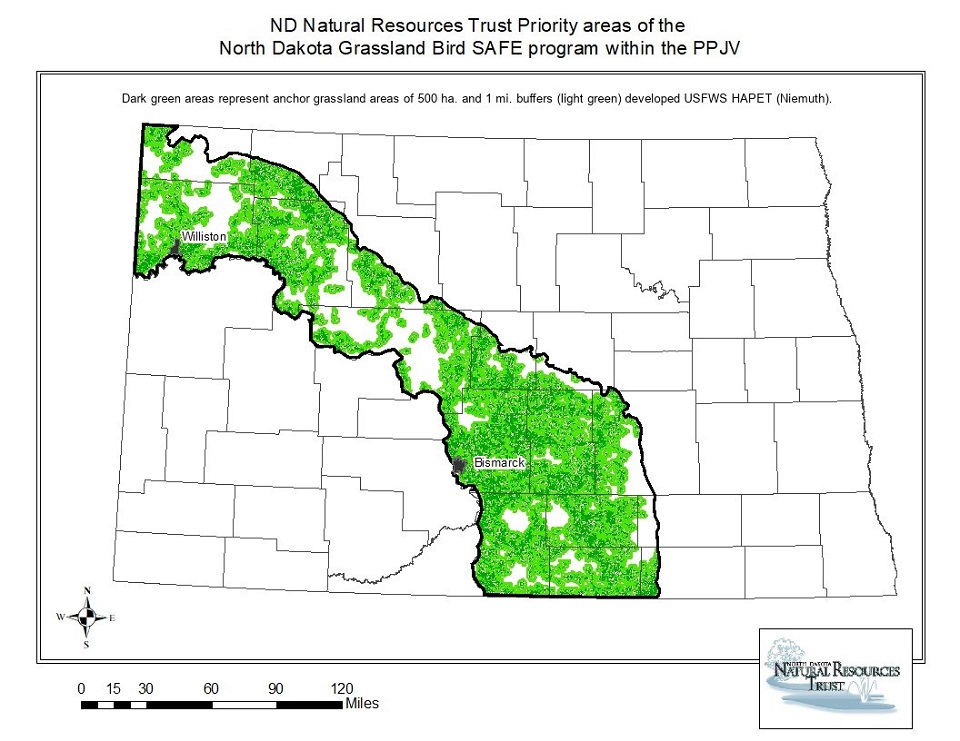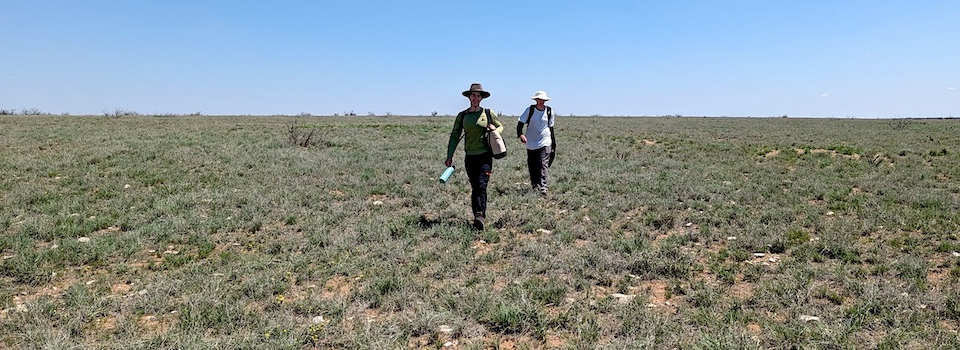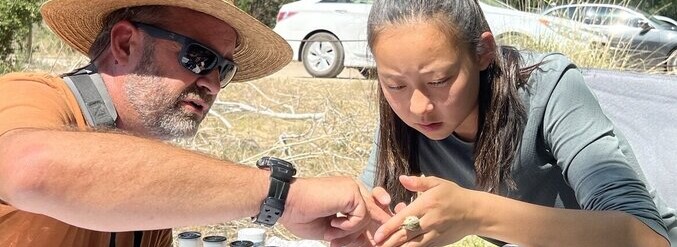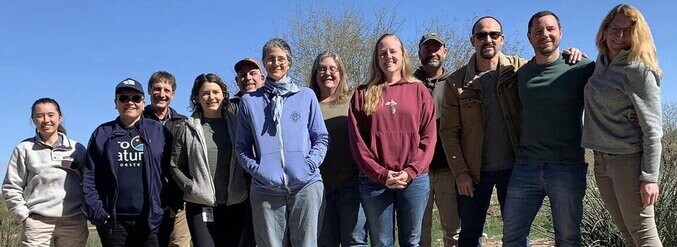The State Acres for Wildlife Enhancement (SAFE) practice within the Conservation Reserve Program (CRP) is an innovative approach which allows state fish and wildlife agencies, along with their federal and NGO partners, to define priority species and landscapes for practice delivery. North Dakota has several designated SAFE projects, but among the most relevant to the goals of the Prairie Pothole Joint Venture (PPJV) is the Declining Grassland Bird SAFE. In the PPJV landscape, this project follows the eastern edge of the Coteau from the South Dakota border on the south to the Canadian and Montana borders on the north and west.
The North Dakota Natural Resources Trust (the Trust) received approval from the PPJV Management Board to utilize $15,000 in PPJV funds to further incentivize certain SAFE applications in that landscape. The decision support mechanism utilized to make those funding decisions is based on grassland distribution mapping done by Neal Neimuth of the USFWS HAPET office in Bismarck, ND.
The Niemuth model illustrates existing contiguous grasslands of at least 500 hectares with 1-mile buffers. Declining grassland birds, and all grassland-dependent species for that matter, benefit from large expanses of unbroken grassland, where disturbance and chemical drift from farmland are minimized. With the goal to reduce grassland fragmentation and increase patch size, the Trust is targeting habitat within the buffered area. Specific objectives are to restore 1,500 acres of grassland and enhance 150 acres of wetlands.
Under the 2018 Farm Bill, both CRP rental rates and incentives were reduced. Sign-up data for the CRP indicate that reduced payments have contributed to less landowner interest. The Trust plans to work with the Farm Service Agency (FSA) and willing landowners to identify SAFE applications in the buffer areas shown on the Niemuth model. The path forward will be to offer additional dollars (PPJV, Trust, and perhaps other grant dollars) to landowners in those key landscapes to assist with things like:
- Establishment costs (e.g. seed bed preparation, seed cost, and seeding)
- Management costs (e.g. weed control)
- Sign-up incentive payments (e.g. one-time up-front payments)
- Technical assistance
- Access payments
All our wildlife species are dependent, either in part or in whole, on private land. It follows then that our effectiveness in restoring the habitat necessary for species like grassland birds is almost totally dependent upon our partnership with farmers and ranchers. Flexible, innovative, voluntary conservation practices that fairly compensate agricultural partners are key to our success. These payments, along with the conservation they encourage, are good for agriculture and good for wildlife – the ultimate partnership outcome.
Utilizing the exceptional data developed within the PPJV by HAPET and others, along with GIS tools that allow effective conservation delivery with almost pinpoint accuracy, enhances both our efficiency and effectiveness. The decision support approach outlined for SAFE practices within the Declining Grassland Bird priority landscape, incentivized by our partnership with the PPJV, will provide a model for conservation delivery across other landscapes.
Article authored by Keith Trego & Eric Rosenquist, North Dakota Natural Resources Trust







